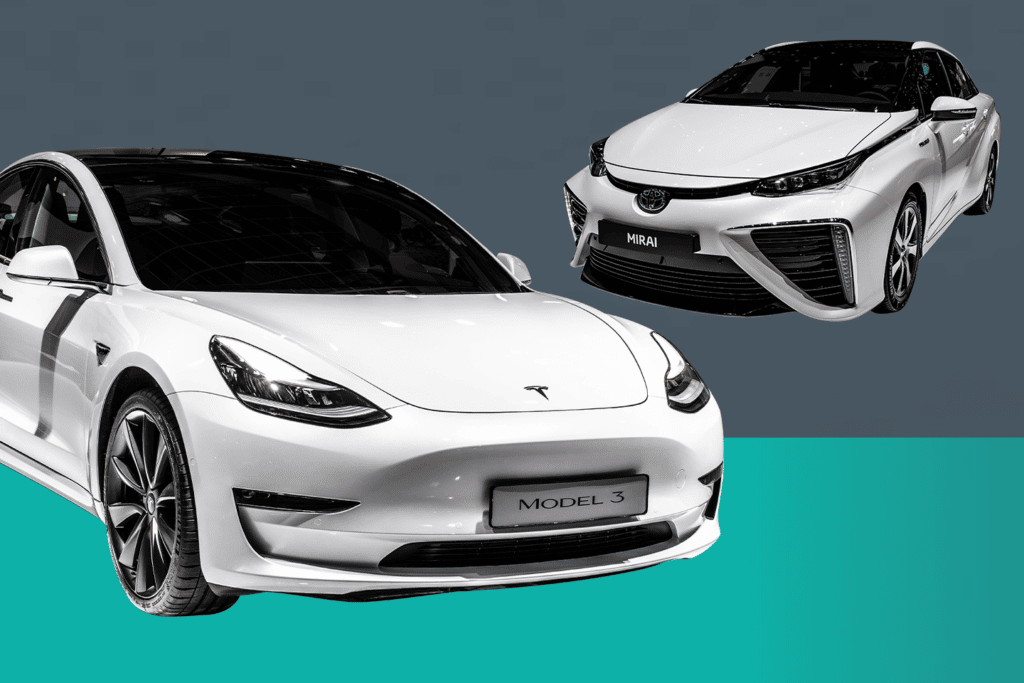This article was first published in H2 View.
This continues to be true as we look towards a clean mobility future.

We are convinced that reaching net zero in global transportation is not a zero-sum, single solution game. Instead, we need a combination of technologies with different strengths – namely battery electric vehicles (BEVs) and fuel cell electric vehicles (FCEVs) – to create a system that is greener, and to do so faster and cheaper than pursuing just one of these options in isolation.
There are three primary reasons for this “combined world” approach:
First, efficiency: a tank-to-wheel perspective, sometimes used to compare BEVs vs. FCEVs, is too narrow to truly encompass the global challenge we are up against. If we are to deliver on a comprehensive energy transition, we need to consider the source of energy, whether sun or wind. BEVs can be easily charged with local solar and wind resources, but not all regions enjoy renewable electricity self-sufficiency. This is where hydrogen can play a positive role. Because hydrogen can be transported across regions, it can be produced in ideal locations with high solar and wind output and then exported where needed. A sun-to-wheel or wind-to-wheel perspective changes the efficiency debate entirely. The same holds true when the entire life cycle of a vehicle is considered rather than purely the tank-to-wheel efficiency: BEVs and FCEVs are almost compatible.
Second, infrastructure: the development of BEVs and FCEVs with their respective infrastructure networks will create a symbiotic transport ecosystem, which enables a more rapid and – perhaps surprisingly – more cost-effective transition. As more BEVs are deployed, the demand on the electricity grid will require costly upgrades and expansion into more remote regions. These costs can be reduced by decreasing the demand on the grid through parallel buildout of a hydrogen refuelling network.
For example, the scale of infrastructure investment for fast charging is obvious for highway refuelling. The massive energy consumption of heavy-duty trucks will need to be recharged during the drivers’ resting times to be commercially feasible. In practical terms, that means the power consumption of each highway charging station would need to equal a town of approximately 25,000 inhabitants, which needs to be provided in remote areas with sufficient buildout of cabling and substations. This is exactly where hydrogen can help.
Last but certainly not least, consumers: context and location of vehicle use is one of the key considerations in the transition to electric mobility. A suburban commuter in a single-family home with parking and charging access will be well served by a BEV. However, a business traveler relying on a highly flexible vehicle with changeable, long routes and no reliable charging access would favour the FCEV for higher productivity. All in all, the better we address these diverse needs, the faster we can help consumers transition to electric solutions. And every additional BEV or FCEV on the road is a step in the right direction, bringing us closer to our shared vision of clean mobility.
We may not know exactly what the world will look like by 2050 but we do know this is a transition of an unprecedented scale and risk, and we are in its initial stages with many issues to be solved throughout the entire transportation value chain. Offering multiple technologies tailored to individual use cases increases the user acceptance for this substantial societal and business challenge and hence increases the speed of transition. The climate crisis requires collaboration across regions, stakeholders, and all available technological solutions. There’s no time to spare and the only way to win is by working together.
Stefan Herbst, General Manager, Toyota Motor Europe
Peter Mackey, Vice President, Strategy & Policy Support, Hydrogen Energy, Air Liquide
Dr. Juergen Guldner, Head of Hydrogen Fuel Cell Technology, BMW Group



